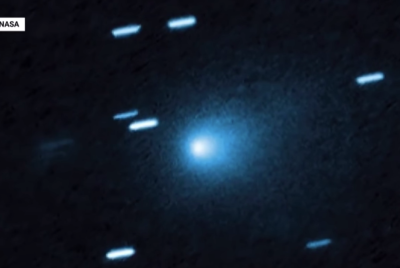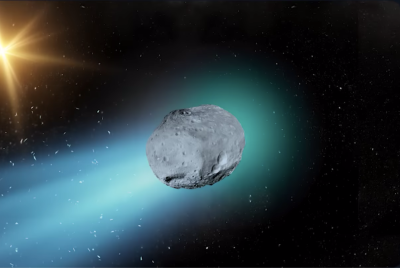3I/ATLAS Comet Confirmed as Natural, but Its Long Journey Comes With a Big Catch
Interstellar comet 3I/ATLAS's strange chemistry is likely due to cosmic ray damage, new research suggests. This means its original composition is hidden, complicating scientific study.

Since its discovery, 3I/ATLAS has been a topic of wide interest, with some speculating about its origins. However, recent research confirms it is a natural object, not an extraterrestrial spacecraft.
Tom Statler, NASA's lead scientist for Solar System small bodies, has been clear on this point. 'It looks like a comet. It does comet things. It very, very strongly resembles, in just about every way, the comets that we know,' he told The Guardian.
Statler added that while it has interesting properties, 'the evidence is overwhelmingly pointing to this object being a natural body. It's a comet.'
The Unexpected Arrival of Interstellar Comet 3I/ATLAS
On 1 July 2025, astronomers at the Asteroid Terrestrial-impact Last Alert System (ATLAS) spotted the large object. It was found to be travelling through our Solar System on an escape trajectory.
This confirmed 3I/ATLAS as our third interstellar visitor, following the discoveries of 1I/ʻOumuamua and 2I/Borisov. Observations quickly showed it was a comet, complete with a distinct coma of ice and dust and even a rare 'anti-tail'.
What Makes the Chemistry of 3I/ATLAS So Puzzling
A significant puzzle surrounding the comet is its unusual chemical makeup, particularly the ratio of carbon dioxide to water. The James Webb Space Telescope and SPHEREx instrument revealed this oddity.
'The ratio measured for the amount of CO2 gas relative to H2O is among the highest ever observed in a solar system comet, demonstrating that the coma of 3I/ATLAS is very CO2-rich,' NASA explained.
A new paper, which has not yet been peer-reviewed, quantifies this anomaly. It states, 'JWST/NIRSpec measurements show CO2/H2O = 7.6 ± 0.3, placing 3I/ATLAS 4.5σ above solar system trends at the observed heliocentric distance'. Any explanation for its composition must account for this dramatic difference.
@neptuynstories.cr 3I/ATLAS: New Evidence For Galactic Cosmic Ray Processing! #3iatlas #nasa #science #foryoupage #news
♬ original sound - NeptuynStories.crz
How Cosmic Rays May Have Rewritten the Story of 3I/ATLAS
To solve this puzzle, a team of astronomers from Belgium and the USA evaluated several hypotheses. They considered factors like the conditions in its home protoplanetary disk, but found a better fit with another theory: galactic cosmic ray (GCR) processing.
This scenario suggests that over billions of years, GCRs converted carbon monoxide on the comet's surface into carbon dioxide.
This process would have created an organic-rich, irradiated crust about 15–20 metres deep, fundamentally altering its outer layers. The bad news is this means we may not be seeing the comet's original, pristine material.
Why a 'Processed' 3I/ATLAS Complicates Interstellar Science
This finding makes studying the environments of other star systems more difficult. We had hoped for a clean sample from another part of the galaxy, but its journey may have concealed the pristine material we wanted to analyse. Science has become more complicated.
'Rather than being pristine messengers from distant planetary systems, interstellar objects may instead carry signatures of processed material, ' the research team writes. They suggest that the comet's current outgassing is only sampling this GCR-processed zone.
Instead of being a direct messenger, this study suggests that 3I/ATLAS is better understood as a natural laboratory for cosmic-ray processing. Although disappointing, this offers a new avenue for understanding interstellar travel's effects on celestial bodies.
More observations are needed to confirm the theory, and telescopes worldwide are currently trained on the object. There is a slim, though unlikely, chance that pristine material could be outgassed as 3I/ATLAS reaches its closest approach to the Sun.
© Copyright IBTimes 2025. All rights reserved.



















